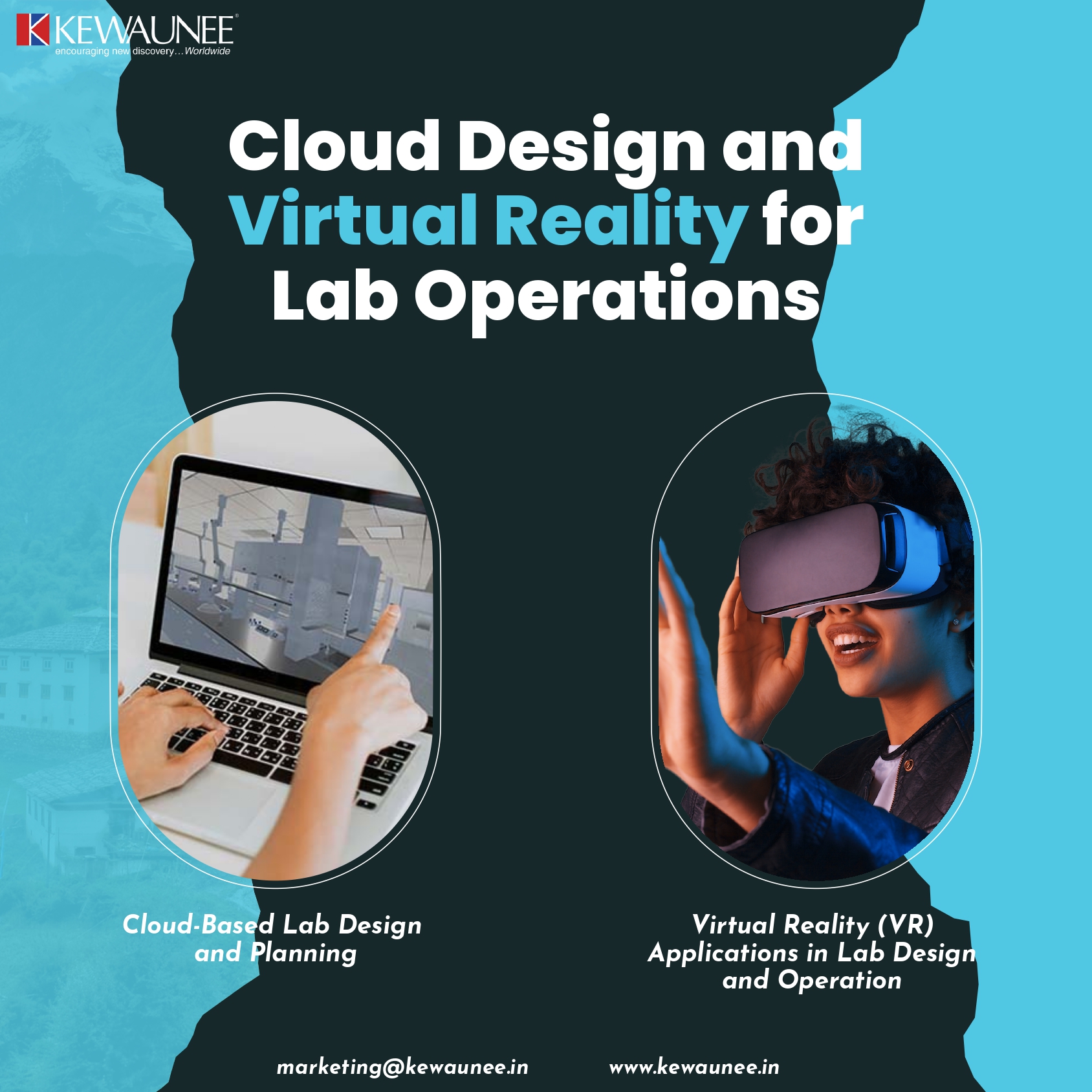Enhancing Lab Operations with Cloud Design and Virtual Reality (VR) Solutions
Efficient lab operations play a crucial role in driving research and scientific workflows. However, traditional lab design and operations often face challenges that hinder productivity and collaboration.
In this blog, we will explore how cloud design and virtual reality (VR) solutions can revolutionize lab operations, optimize workflows, and overcome traditional limitations.
Understanding Cloud Design Solutions:
Cloud-based lab design platforms offer numerous benefits for research facilities. These platforms provide a collaborative environment where researchers, architects, and designers can work together seamlessly.
By harnessing the power of the cloud, teams can access design files, make real-time revisions, and communicate effectively. The cloud enables efficient project management, allowing for milestone tracking, task assignment, and version control.
Additionally, cloud design platforms offer secure data storage and easy accessibility, ensuring that project files are protected and can be accessed from anywhere, at any time.
Advantages of Virtual Reality (VR) in Lab Design and Operations:
Virtual reality (VR) technology opens up new possibilities for lab design and operations. With VR, researchers can experience an immersive and interactive environment that replicates the physical lab space.
Virtual walkthroughs allow researchers to navigate and explore lab layouts, equipment placement, and workflow optimization. This enables them to identify potential issues and make informed decisions before investing in physical changes.
VR also offers training and simulation opportunities, allowing researchers to practice complex experiments and techniques in a safe and controlled virtual setting.
Cloud-Based Lab Design and Planning:
Cloud-based solutions revolutionize lab design and planning by enabling collaborative design and real-time collaboration. Remote teams can work together, regardless of their physical location, fostering creativity and innovation.
With cloud-based platforms, researchers can share design files, provide feedback, and track progress in real-time. This ensures that everyone is on the same page and reduces the time and effort spent on coordination. Efficient project management features, such as task assignment and milestone tracking, help keep projects on schedule and within budget.
Version control capabilities ensure that all team members are working with the most up-to-date design files, avoiding costly errors and rework.
Virtual Reality (VR) Applications in Lab Design and Operations:
Virtual reality offers exciting applications for lab design and operations. Researchers can take virtual tours of their proposed lab design, experiencing it from a first-person perspective. This enables them to assess the suitability of the layout, optimize equipment placement, and identify potential workflow bottlenecks.
VR also provides an immersive platform for training and skill development. Researchers can practice lab procedures, experiment setups, and safety protocols in a virtual environment, enhancing their proficiency and minimizing the risk of accidents or errors. VR simulations allow for repetitive practice and enable researchers to refine their techniques before working with actual equipment.
Data Integration and Management in Cloud-Based Solutions:
Cloud-based solutions facilitate seamless integration of lab equipment and IoT devices, enabling real-time data collection and analysis. By connecting lab instruments and sensors to the cloud, researchers can capture data directly and eliminate manual data entry errors.
Centralized data storage and accessibility ensure that research data is securely stored and readily available to authorized personnel. Cloud-based platforms also offer data backup and disaster recovery strategies, minimizing the risk of data loss and ensuring data integrity.
Researchers can leverage advanced data analysis tools and techniques to derive meaningful insights and make data-driven decisions, ultimately accelerating the pace of research.
Implementation Considerations and Challenges:
Implementing cloud-based and VR solutions in lab operations requires careful consideration of technical requirements and infrastructure. Research facilities need to assess their IT capabilities, such as internet bandwidth, security protocols, and hardware compatibility.
Adequate training and user adoption strategies should be developed to ensure a smooth transition to these new technologies. Resistance to change and privacy concerns may arise during implementation, and addressing these challenges through effective communication, training, and transparency is essential.
Research facilities should also consider scalability and future-proofing their infrastructure to accommodate growing demands and emerging technologies.
Future Trends and Innovations:
The future of cloud design and VR technologies holds great potential for further advancements in lab operations. Integration with artificial intelligence and machine learning can enable intelligent lab design and automation.
Augmented reality (AR) applications, which overlay virtual elements onto the physical lab space, can enhance real-time data visualization and improve experimental workflows. Research facilities should stay updated on these emerging trends and innovations to leverage them for continuous improvement and innovation.
Conclusion:
In conclusion, cloud design and VR solutions offer exciting opportunities for enhancing lab operations and optimizing workflows. By leveraging these innovative technologies, research facilities can overcome traditional limitations, improve collaboration, and accelerate scientific advancements.
We have explored the benefits of cloud design and VR, emphasized the importance of data integration and management, and provided insights into implementation considerations and challenges. By embracing these transformative technologies, research facilities can enhance efficiency, foster collaboration, and stay at the forefront of scientific innovation.
It is time for research facilities to embrace cloud design and virtual reality solutions and unlock the full potential of their lab operations.
Comments are closed.











